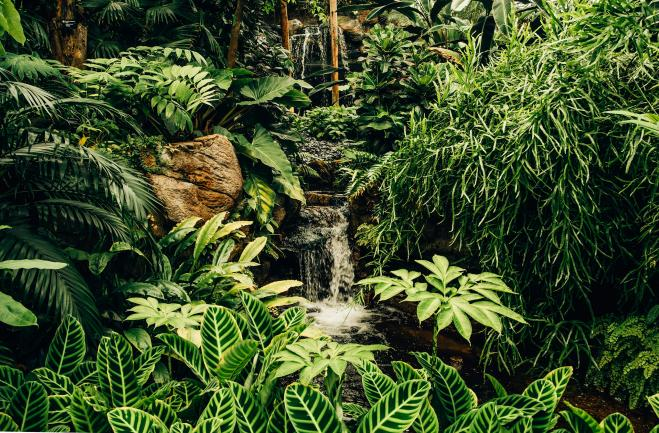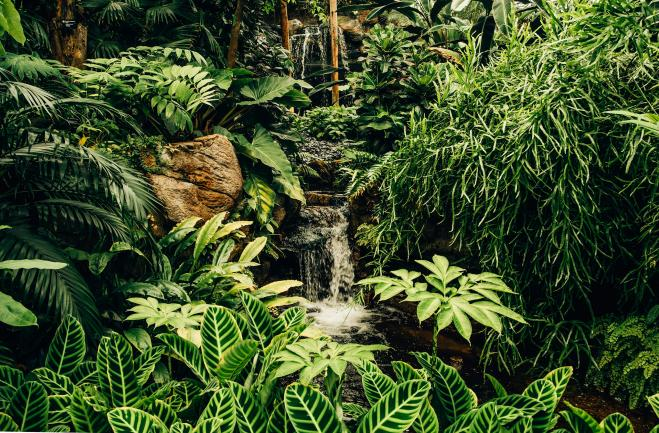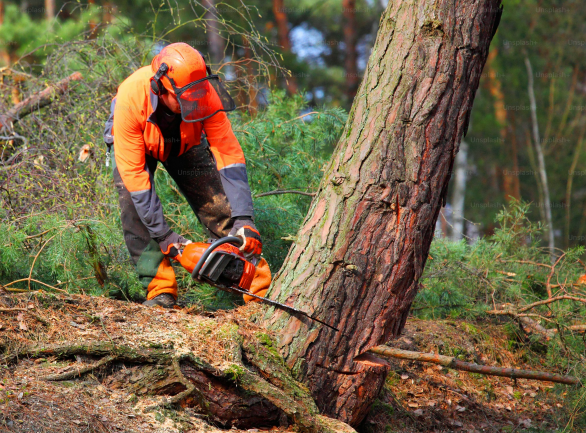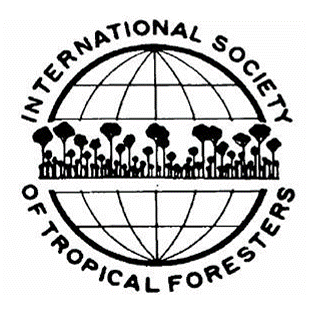1.Distribution and Characteristics
- Distribution:Rainforest are mainly distributed in Amazon basin in south America. Its rainforest area accounts for about half of the global tropical rainforest area. It is the largest, most diverse,and well preserved tropical rainforest in the world. In addition, it is also distributed in south of Mexico in Central America and the Antilles.
- Climate:It belongs to tropical rainforest climate, with high temperature and heavy rainfall all year round. There are no obvious seasonal distinction. The annual average temperature is about 25 ℃~30 ℃, and the average temperature in the coldest month is also above 18 ℃. The annual precipitation usually exceeds 2000mm. It can even reach 6000mm The annual average temperature is 25 ℃~30 ℃, and the average temperature of the coldest month is also above 18 ℃. The annual precipitation usually exceeds 2000mm. It can even reach 6000mm in some places. It is humid throughout the year, with the relative humidity of over 90%.
- Vegetation:There are various plant species, with 40 to 100 types of trees growing per acre, forming a mixed rainforest with unclear differentiation of dominant species. The trees are tall. Some types can even reach up to 40-60 meters. The main trunk is straight and it just like the cylindrical. Wooden vine plants and epiphytes are particularly developed, such as bromelaceae, Araceae, and Palm family plants.

2.Bio-diversity
- Plant diversity:The tropical rainforest of the Americas have the richest plant species in the world, with 70% being woody plants. In the Amazon rainforest, there are over 40000 known plants, including various rare trees, flowers, medicinal plants, etc.

- Animal diversity: It is one of the regions with the richest animal species in the world, with a peak in animal species differentiation but a relatively small number of individuals. In the Amazon rainforest, there are marmosets, capuchins, spider monkeys, sloths, anteaters, South American tapirs, vampire bats, hummingbirds, pheasants, and pythons, all of which have vibrant body colors and strange appearances.

3.Economic and social value
- Economic value: Providing a large amount of wood for production and daily life, it is an important building material and industrial raw material. In addition, there are many precious economic plants in tropical rainforests, such as rubber, coffee, oil palm, sisal, etc. These crops play an important role in the global economy and provide abundant material resources for the local and global communities.
- Social value: Nurturing numerous local residents, providing them with essential necessities such as food, medicinal herbs, and shelter, it is the home they rely on for survival. At the same time, the unique natural landscapes and rich biodiversity of tropical rainforest attract a large number of tourists, and the development of tourism brings economic income to the local area, as well as promoting cultural exchange and dissemination.
4.Threats
- Deforestation: In order to meet the global demand for timber, a large amount of tropical rainforest are being cut down. Many multinational corporations buy rainforest land, cut it down and burn it down, and use it as a cattle ranch to provide beef to countries with high demand.

- Agricultural development: In order to cultivate economic crops and meet food demand, a large amount of rainforest land is cultivated into farmland. In tropical rainforest countries such as Brazil, large farms are built in the rainforest to cultivate export crops such as sugarcane and palm in order to repay foreign debts.
- Infrastructure construction: The construction of infrastructure such as highways and railways passes through rainforest areas, leading to the fragmentation of rainforest and the destruction of biological habitats, posing a threat to biodiversity.
5.Protection
- Brazil’s conservation actions: The Brazilian government has established strict laws and regulations to strengthen the protection and management of the Amazon rainforest and restrict deforestation. At the same time, a large number of nature reserves have been established to protect rainforest ecosystems and biodiversity. In addition, we actively promote sustainable development projects to promote the coordinated development of local economy and environmental protection, such as the development of ecotourism.
- International cooperation: The international community has paid high attention to the protection of tropical rainforest in the Americas, and many international organizations and countries have provided financial and technical support to tropical rainforest countries to help them strengthen their conservation capacity building. For example, organizations such as the World Wildlife Fund (WWF) have played an important role in tropical rainforest conservation, raising global awareness of tropical rainforest conservation through conservation projects, advocacy, and educational activities.
